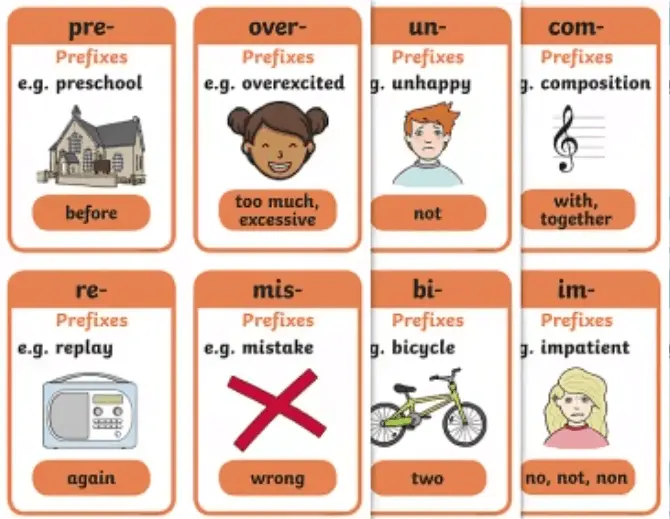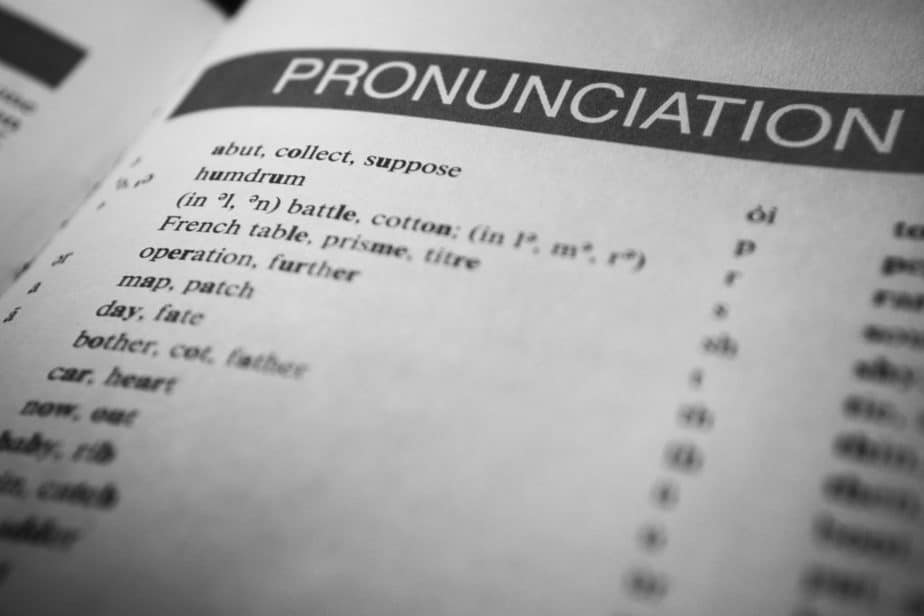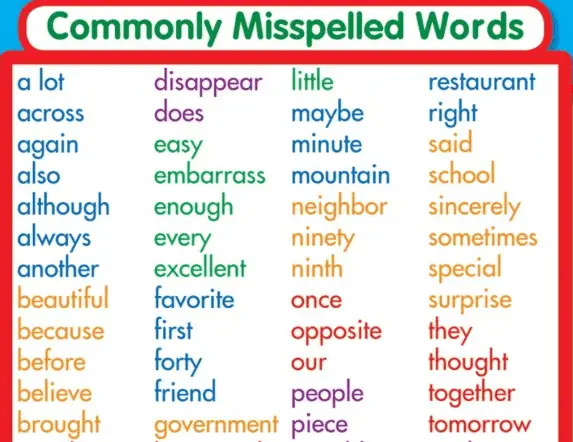Although research has proven inconclusive about exactly how students of different ages pick up a new language, research does suggest that the following strategies for teaching ESL students vocabulary all significantly improve the rate of learning of new vocabulary:
1. Provide Meaningful Context
The context, or situation in which a new word is seen or heard provides immediate clues as to its meaning. For example, you can usually tell whether the word is for use in formal or informal situations by the context, what part of speech it is: verb, noun, or adverb etc…
In fact the contextual cues can override the need for much direct explanation which is particularly useful for lower ability students. Try explaining the word ‘glacier’ to a low level student with and without a picture!
Usng pictures is one of the first things most TEFL courses will teach you. Read my TEFL certificate recommendations here.
2. Teach Word Clusters

For some reason I find that this strategy is often ignored. Teaching words in clusters/a similar category ought to be quite straightforward but I see many teachers lose focus when it comes to this aspect and they often dot around different topics. This makes teaching the vocabulary a longer process as firstly, you have to build the context again each time and secondly you don’t have a related word to compare its usage too.
Teaching words in clusters, however, allows the student to form a web of the new vocabulary and create links in their mind between how the words are the same and different. For example, teaching eight new words related to personality is going to be far easier than teaching eight new words from random topics. This sounds like an obvious point but is particularly worth remembering if you teach a subject to second language learners.
The temptation is to overlook the fact that the students are ESL students and jump around different topics when it would be more productive to focus on one group of words in one topic and spend time emphasising how the words are similar and different.
This in itself is a great little teaching technique and way of both finding out how much the students know about the words but also enabling them to tease out the nuance between words. Imagine asking the students how certain words are different. For example, words related to personality that have thrown up some interesting discussions and learning in the past are: outgoing, popular, confident and extroverted.
You might also be interested in 15 Engaging Speaking Activities For Online Classes here.
3. Connect With Known Vocabulary
If you were trying to climb a tree would you prefer to climb from half way up the tree or right from the bottom? Of course, you would want to start halfway up, it’s just easier and less time consuming. This is in effect what you are doing when you start with vocabulary that students already know.
Just recently I taught the word ‘tenacious’ but I did not just jump in with teaching that word. We watched a video about an inspirational young boy and they came out with the words to describe him: determined, never giving up and positive.
From those word suggestions and the context of the video it was then very easy to move into the teaching of the word tenacious as you’ll see from the video if you fancy a bit of inspiration.
4. Teach Relevant Prefixes and Suffixes
Why teach one word when you can teach multiple words with minimal extra understanding. If you get your students heads around the most common prefixes and suffixes you can easily learn several words from the same root word.
For example, why just learn the word possible when you can throw in the prefix ‘im’ to make it impossible too. Why just teach identify when you can easily learn misidentify at the same time. This is a nice way for students to feel more at home in the English language and it encourages them to start playing with words more themselves. The most commonly used prefixes are listed here for reference.

5. Provide Meaningful Encounters
Research suggests that students need to have on average 16 meaningful interactions with a new word in order to be able to fully comprehend it and to be able to use it themselves. This begs the question ‘are you providing enough opportunity for your students to engage with new words? Or, are you a one lesson wonder?
Naturally, starters and plenaries provide excellent opportunities for recapping and reviewing vocabulary so don’t be afraid to be repetitive with the vocabulary you use. Personally, this is what I find to be one of the strengths of using online vocabulary tools, such as, Quizlet.com.
You only need to add the word to a list once and it will stay there to be used and repeated again and again in different games. This does help overcome the natural teacher’s desire to want to continue with more and more new words rather than consolidating the words that have not yet reached the long term memory of students.
You might like: Can A Bilingual Teacher Teach ESL?
6. Model and Ensure Correct Pronunciation
This can be an easy one to overlook, especially when teaching English for academic purposes (EAP). Often in such classes the focus is mainly on writing in the correct tone, layout, grammar and genre. This means the pronunciation may be overlooked, however, can you really say that you have learned a word if you can’t actually say it correctly?

For this reason it is important to drill students’ pronunciation, provide effective native level modeling and give students feedback on how they are sounding. Remember, pronunciation is not just how they say that word in isolation but how they use sound linking with that word and the words around it. Drill full sentences to effectively convey appropriate intonation , sound linking and nuance.
7. Show Incorrect Usage
As well as modeling use of new words accurately you should also be showing students how not to use the new words. Furthermore, often students who have the same first language will make the same pattern of mistakes in English which you can often guess in advance what mistakes they will be. So, go through the types of mistakes you think they may make and explain why they would be incorrect.
I will often have writing tasks on Google docs and when I spot a pattern of mistakes I will put this on the projector and do a mini tutorial on that mistake to nip it in the bud for all students. Afterwards, I will get students to peer mark each other’s work and look for these exact mistakes.
8. Encourage Paraphrasing
If a student can explain a word accurately or get around the use of the word in a conversation through paraphrasing then you know they have understood the word fully. This is a tricky thing to do with higher level words as the nuances can be quite subtle which is where the challenge and learning is.

There are a few useful exercises to develop this skill listed here: https://www.teachingenglish.org.uk/article/paraphrasing
9. Use a Variety of Teaching Styles
Learners need to be exposed to words in different ways, formats and mediums in order for it to sink in deeply. Trying different approaches and activities will get the students engaging with the words from different angles and learning more about how they should be used as well as making them more memorable.
10. Force Students to Attend to Vocabulary Carefully
Once you have taught the vocabulary you need to force students into having to pay attention to the accurate use of those words. Activities that force students into focusing on the correct form and tense of a word are particularly useful.

The activities I am referring to are often known directed activities related to texts (DARTS) and involve a range of activities such as: cloze, error correction, grammar auctions, true/false, sequencing, grouping, underlining, highlighting and completing a table. A full explanation of these can be found here.
In a nutshell, these are the activities where you are really going to find out if a student has learnt the way new words are used or not. They may understand the general meaning of a word but if they can’t apply the different forms of the word accurately then they are not even halfway there.
All of these techniques apply to online and off line teaching. You might be interested in my guide for how to start online teaching here.
ESL Vocabulary Teaching Techniques and Tips
Tip 1: Teach tier 2 words
Tier 2 words are words that are words used across different topics, subjects and genres over and over again. I’d like to use a text from a Biology lesson to illustrate my point. Why from Biology?
Well, the topic could be anything. It is just that in my current job I train subject teachers to teach ESL students in an ESL friendly way and so I am using the same text I used with them.
TASK: Which 6 words would you select to pre teach students from this text?
Animal cells are unlike bacterial cells in that they usually possess a nucleus. This component is present in almost all eukaryotic cells. It is found in the cytoplasm and is surrounded by its own membrane. The cell’s genetic material (DNA) is enclosed within it, arranged into shapes called chromosomes. (Red blood cells do not have a nucleus, so they have more room to absorb and carry the maximum amount of oxygen, which is their main function.)
Typically, subject teachers select the words highlighted below:
Animal cells are unlike bacterial cells in that they usually possess a nucleus. This component is present in almost all eukaryotic cells. It is found in the cytoplasm and is surrounded by its own membrane. The cell’s genetic material (DNA) is enclosed within it, arranged into shapes called chromosomes. (Red blood cells do not have a nucleus, so they have more room to absorb and carry the maximum amount of oxygen, which is their main function.)
Now, they would all seem like good choice of words to teach, however, all those words are subject specific they are going to be of no use to students outside of the subject of Biology. Now, take a look at the words highlighted below this time:
These are the second tier words that I would personally want to make sure students knew:
Animal cells are unlike bacterial cells in that they usually possess a nucleus. This component is present in almost all eukaryotic cells. It is found in the cytoplasm and is surrounded by its own membrane. The cell’s genetic material (DNA) is enclosed within it, arranged into shapes called chromosomes. (Red blood cells do not have a nucleus, so they have more room to absorb and carry the maximum amount of oxygen, which is their main function.)
Notice how all of these words could be used in other subjects/topics. The words are all going to be used time and time again by any student learning English. Therefore, does it not make sense to at least pay some attention to tier two words?
Some schools identify sets of tier two words which they would like all students to know per year group. It works really well if there is a collective approach by teachers to teach and remind students of how these words work.
It gives the students a lot of confidence as they can start to decode more and more texts which is very heartening and motivating.
Tip 2: Repetition, Repetition, Repetition
At the risk of sounding like a broken record, at the risk of sounding like a broken record, at the ri…, nah – enough already! I used to think that students would get bored if I kept on reinforcing the same vocabulary.
Not true, students actually love it, they get continued success and the buy in from students is better I find because after you have revisited group of words a few time students cotton on to the fact that they really should know these words and if they don’t and others do it can really make them focus and make the effort to improve.
Tip 3: Snowballing
I like to teach words that build on previous knowledge, that are right at the edge of students ability, and that students can see the point in knowing. One way to do this is to simply go through your lesson topics and when you come across words that the majority of students don’t know then you add it to your snowball list.
Next lesson, you can recap on these words and add new ones. Because the words are part of your lesson you are already showing them words in context and you are only adding words that most students do not know.
By the end of the course or term, if you constantly use these words in games and activities for starters and plenaries then you will have a lengthy list of words which students can proudly say they know.
I can’t tell you how simple yet effective this technique is, and it works even better in one to one conversation lessons as students feel as though you are really tailoring your teaching to them.
Tip 4: Use Tech Tools Synchronistically
I do love tech tools for vocabulary learning. I’m talking about websites such as Quizlet.com which enable you to use online flashcards and games to pick up new vocabulary. This is great for motivated students who can use them in their own time but a lot of students aren’t.
However, I have found these tech tools to be better used with students in-class. The advantage of this is that you can comment and create competition between students.
There is often a leader board created on the website and you can make hyperbolic references to this as the lead changes from student to student. I sometimes even give a running commentary of students as they go through the various games and quizzes.
This sounds a pretty docile tip, but it creates a certain momentum and buy in for the students which otherwise is not there, you’re just telling them to go away and use a website. If you get them excited about it in the class then they are more likely to go away and use the tools independently which is of course what we want.
Finally, I would say observe your students and see what works best for them. Different individuals and groups respond differently so be flexible in your vocabulary teaching and have a multiple of options up your sleeve – good luck!
You might also like to read: 16 Fun Ways To Teach Vocabulary Online
Bibliography
Just in case you want to read about this further here is some of the research backing up some of the things I have said:
New words should be taught in a meaningful context (Ellis & Farmer, 1996-2000).
Students need to hear and produce the correct pronunciation of a word (Fay & Culter, 1977).
Root words, base words, prefixes, and suffixes that students will encounter frequently need to be taught (Jones, 1999).
Words should be taught in clusters (Marinak, et al, 1997).
Correct and incorrect usage of the new vocabulary needs to be shown (Ellis & Farmer, 1996-2000).
New vocabulary needs to be connected with known vocabulary (Ellis & Farmer, 1996-2000).
Opportunities need to be created for students to paraphrase (Ellis & Farmer, 1996-2000).
A variety of actively engaging learning formats needs to be on offer (Ellis & Farmer, 1996-2000).
Student’s need to be provided with 15-20 meaningful encounters with a word (Lightbown, 2013).
Student’s learn better when they need to attend carefully to new vocabulary during reading activities (Lightbown, 2013).
